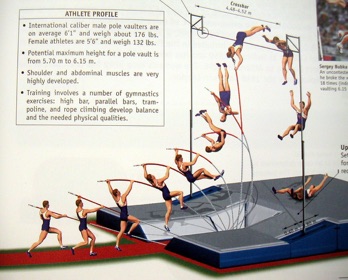

Our musculo-skeletal system performs very well in a number of different conditions, but it is certainly no well adapted to all of them. For instance we are very bad swimmers and cannot fly at all. But, everybody knows that fins can enhance swimming speed and human-powered flight only relatively recently became viable, thanks to very sophisticated pieces of technology. Similarly to other species that use similar locomotor patterns in different environments (seagulls moves their wings the same way both in air and in water, eels undulates in water and on land), our most successive ‘universal’ motion pattern is walking and cycling. The first one is also used in cross-country skiing, roller and ice skating, the second one (in addition to bicycling) is ‘exported’ to flying, hydrofoil boating, and even to human powered submarines. The preference in using lower limbs comes from the much greater muscle mass involved. This consideration allows also to understand why swimming, by using mainly upper limbs, is so inefficient.
The REVIEW ARTICLE provides an overview of the various type of mechanical work that has to be done to move around and of the different strategies to make a better use of the same propulsor, i.e. our skeletal muscles, by adding passive tools capable to enhance our loco-motor performance.


Saturday, July 10, 2004
REVIEW ARTICLE: Passive tools for enhancing muscle-driven motion and locomotion.
LEFT
Halteres used in ancient Olympics, human-powered aircrafts, fins for swimming, hydrofoils and pedal drive propellers, bows and arrows, bicycles are only a few examples of human ingenuity in the strive to potentiate the external performance of our musculo-skeletal system.
below
Human can jump a much higher distance when exchanging the energy of running speed with the potential energy via the elastic deformation of the pole. Which height could be reached by combining a bicycle with a pole? By using almost the same muscles we could reach 20 m height.
Click on the REF above to require a pdf file
Cliick on [+Corrigendum in J Exp Biol 207: 2185, 2004] for IMPORTANT amendments




